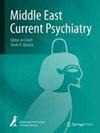The prevalence and consequences of workplace violence among psychiatrists in Saudi Arabia: a cross-sectional study
IF 1.6
Q3 PSYCHIATRY
引用次数: 0
Abstract
There has been increasing concern globally about the rise in workplace violence (WPV), which is considered a persistent problem generally overlooked by the public and professional organizations. WPV is a significant challenge faced by psychiatrists internationally, yet little is known about WPV among psychiatrists in Saudi Arabia. This study aims to estimate the prevalence of WPV against psychiatrists in Saudi Arabia and identify the types and sources of violence experienced as well as the associated risk factors that contribute to WPV. Among 239 psychiatrists, the prevalence of WPV in Saudi Arabia was 56.3%. The prevalence was particularly high among those working in the central region (55.4%) and in Ministry of Health hospitals, Violent behavior was exhibited mostly by patients 133 (99.3%), and the most common type of violence was verbal abuse 75 (56.0%). Respondents reported that patients’ health conditions, denial of admission to the hospital, and staff shortages were the most common triggers for violence. More than two-thirds of the psychiatrists (74.6%) did not require medical intervention after incidents of violence. The majority of psychiatrists felt either stressed (39%) or angry (22.0%) after such incidents. Reasons for not reporting violent events included feeling that violence is part of the job (76.9%) and being unaware of the violence reporting system (50.8%). This study underscores the significant prevalence of WPV among Saudi Arabian psychiatrists, especially in the central region and in Ministry of Health hospitals, notably in emergency rooms. Perpetrators are primarily psychiatric patients and their relatives. The issue is compounded by staffing shortages. WPV poses physical risks and causes psychological stress, negatively impacting productivity. Underreporting persists due to a lack of awareness or violence being perceived as part of the job. Addressing these challenges through raising awareness, providing support mechanisms, and enforcing regulations is essential to bolster workplace safety and patient care for psychiatrists.沙特阿拉伯精神科医生工作场所暴力的发生率和后果:横断面研究
工作场所暴力(WPV)的增加在全球范围内引起了越来越多的关注,这被认为是一个长期存在的问题,通常被公众和专业组织所忽视。WPV 是精神科医生在国际上面临的一个重大挑战,但人们对沙特阿拉伯精神科医生中的 WPV 却知之甚少。本研究旨在估算沙特阿拉伯精神科医生遭受 WPV 的发生率,并确定遭受暴力的类型和来源以及导致 WPV 的相关风险因素。在沙特阿拉伯的 239 名精神科医生中,WPV 的发生率为 56.3%。在中部地区(55.4%)和卫生部下属医院工作的精神科医生中,暴力行为发生率尤其高。暴力行为的主要施暴者是患者,有 133 人(99.3%),最常见的暴力行为类型是辱骂,有 75 人(56.0%)。受访者称,病人的健康状况、拒绝入院和人手短缺是最常见的暴力诱因。超过三分之二的精神科医生(74.6%)在暴力事件发生后不需要医疗干预。大多数精神科医生在此类事件发生后感到压力(39%)或愤怒(22.0%)。不报告暴力事件的原因包括觉得暴力是工作的一部分(76.9%)和不了解暴力报告系统(50.8%)。这项研究强调了沙特阿拉伯精神科医生中 WPV 的严重普遍性,特别是在中部地区和卫生部医院,尤其是急诊室。施暴者主要是精神病患者及其亲属。人员短缺使问题更加复杂。WPV 带来身体风险并造成心理压力,对工作效率产生负面影响。由于缺乏认识或认为暴力是工作的一部分,报告不足的现象一直存在。通过提高认识、提供支持机制和执行法规来应对这些挑战,对于加强精神科医生的工作场所安全和患者护理至关重要。
本文章由计算机程序翻译,如有差异,请以英文原文为准。
求助全文
约1分钟内获得全文
求助全文
来源期刊

Middle East Current Psychiatry
Medicine-Psychiatry and Mental Health
CiteScore
3.00
自引率
0.00%
发文量
89
审稿时长
9 weeks
 求助内容:
求助内容: 应助结果提醒方式:
应助结果提醒方式:


